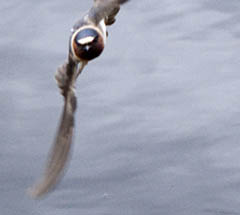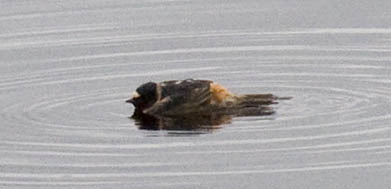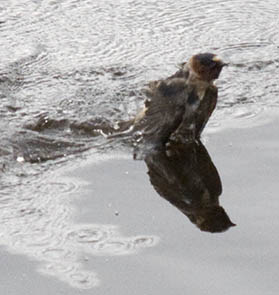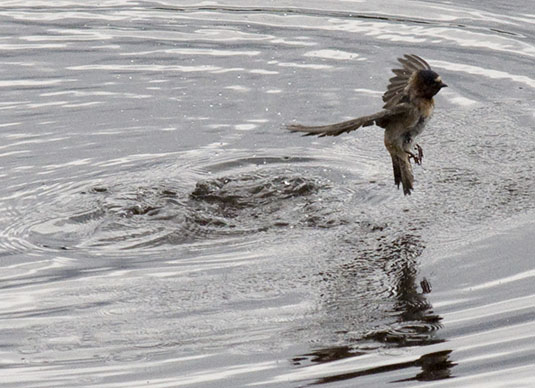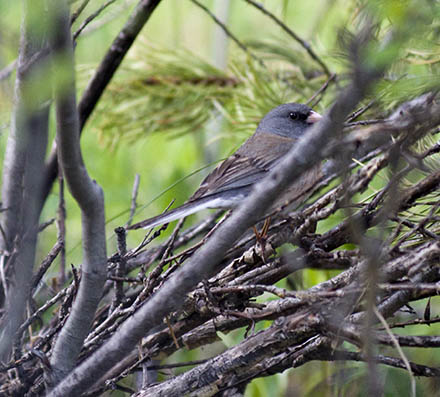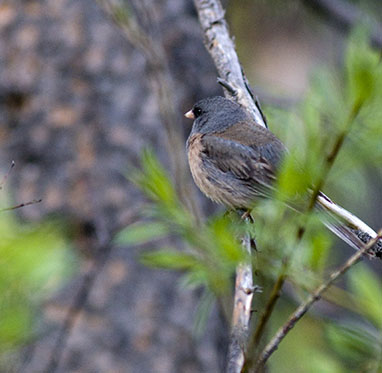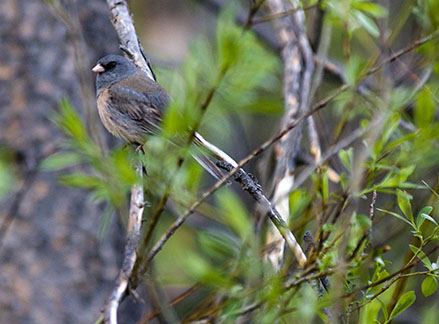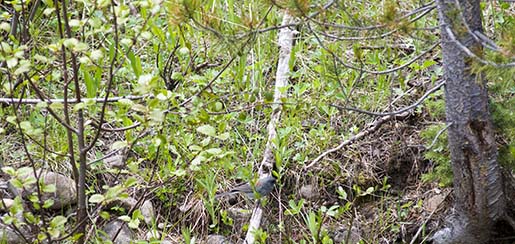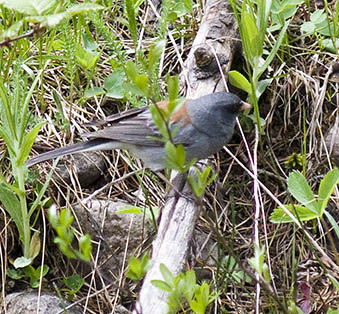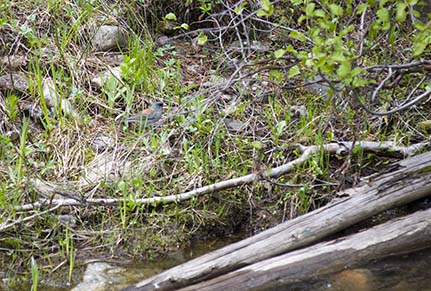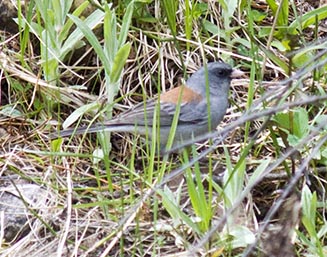Ahhhh, my first day of the holiday season vacation! Of course, this just means I swap career work items for honey do work items but it sure feels great to be able to sleep in a bit. Knowing all the things I have to get done over this break, figured it would be prudent to get some December posts out of the way. So, I bring you today’s featured feathered friend.

I took this while out hiking the Red Rock Canyon in Nevada (outside of Las Vegas). We’ve been there a couple of times now and based on the previous posts and some that are still in the hopper, I must say it has produced a surprising number of checks in the bird list – add in the marks gained from Henderson and Nevada has been very very good to me – they obviously have better wildlife than they do politicians. For those not aware, this particular specimen comes from the Dark-Eyed Junco family. Their long black hood is pretty distinctive in the birding arena. The Dark-Eyed Juncos have been featured on the blog a number of times now (links here, here and here). Because of they are relatively common (they show up in droves here every Winter). I usually don’t get too excited about capturing them but as a rule, “never pass up a bird shot”. Once again this principle has likely led to a new mark in the bird list.

If you look at the specimens in the links above or live in the Midwest you are familiar with one variation of the Dark-Eyed Junco – the Slate Colored group. They are aptly named in that they are pretty much dark gray colored from head and top feathering through to the tail. Typically they have a white underbelly with some variation in gender. There is a White-Winged group, a Gray-Headed group and a Pink-Sided group to name a few, but none of those variations have the distinctive executioner hood. It is this specific feature that led me to the determination that this is an Oregon group Dark-Eyed Junco.
Hit the jump to see a couple more pictures of the Junco (a different one to be specific) and learn a few facts about this little bird.





